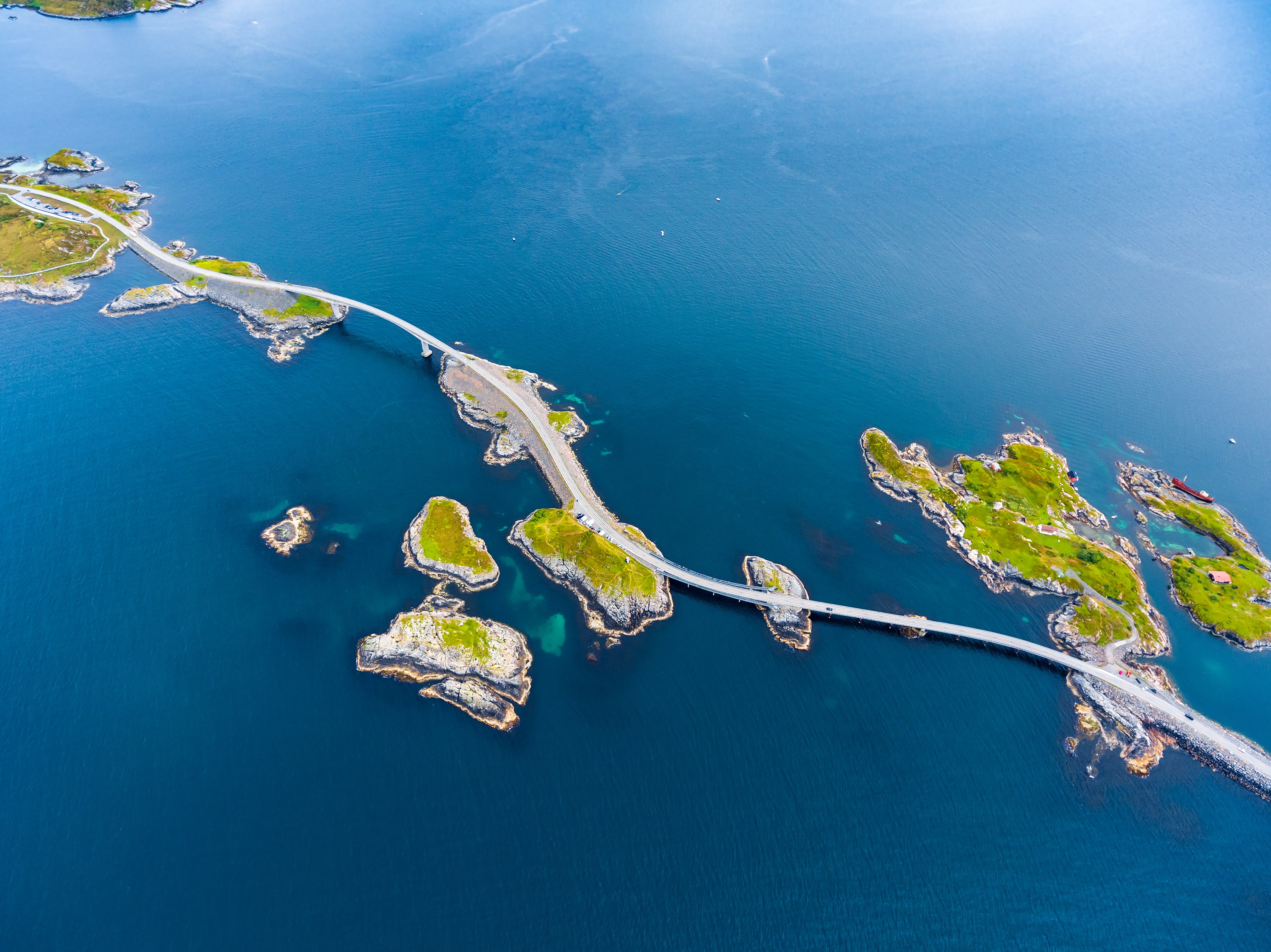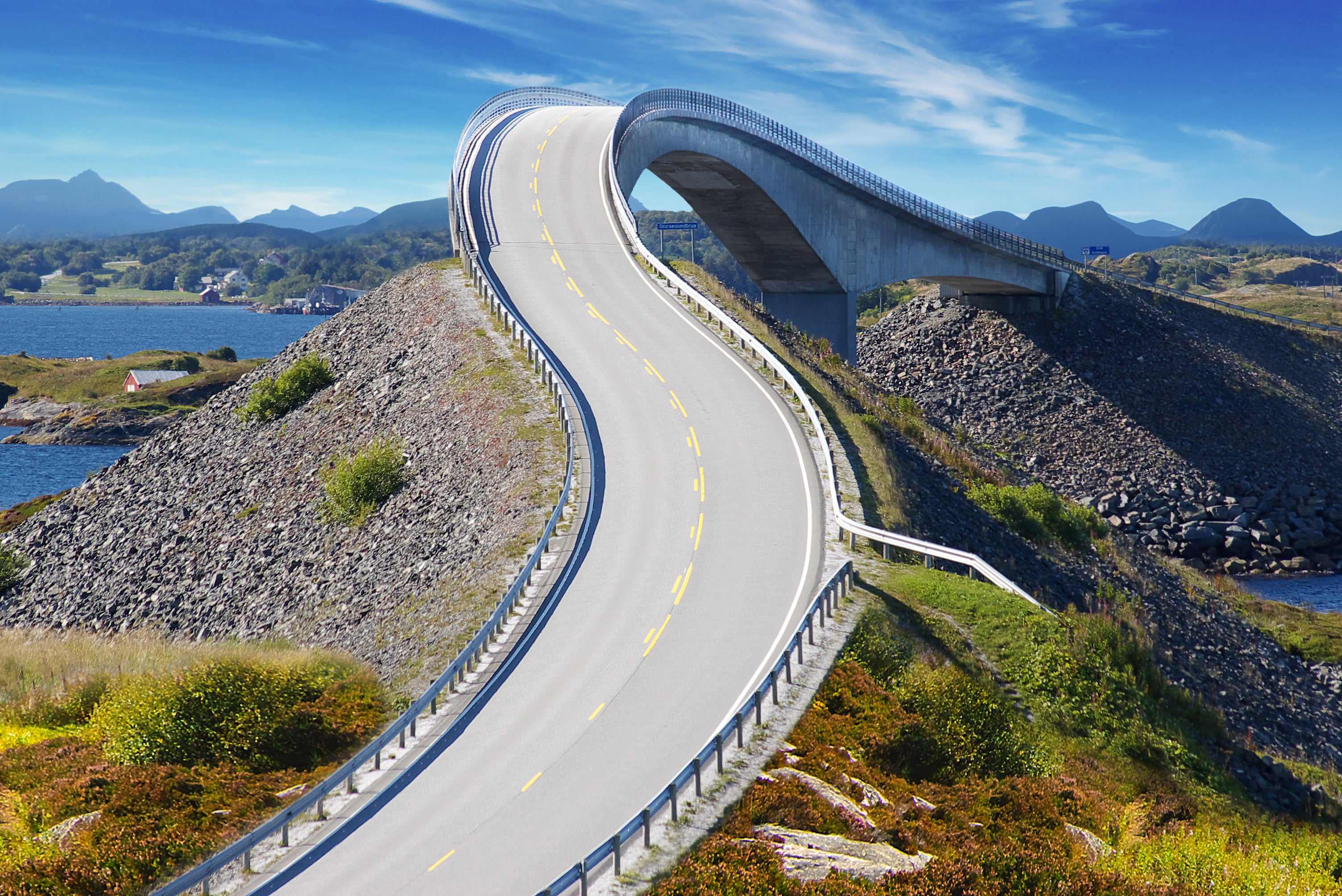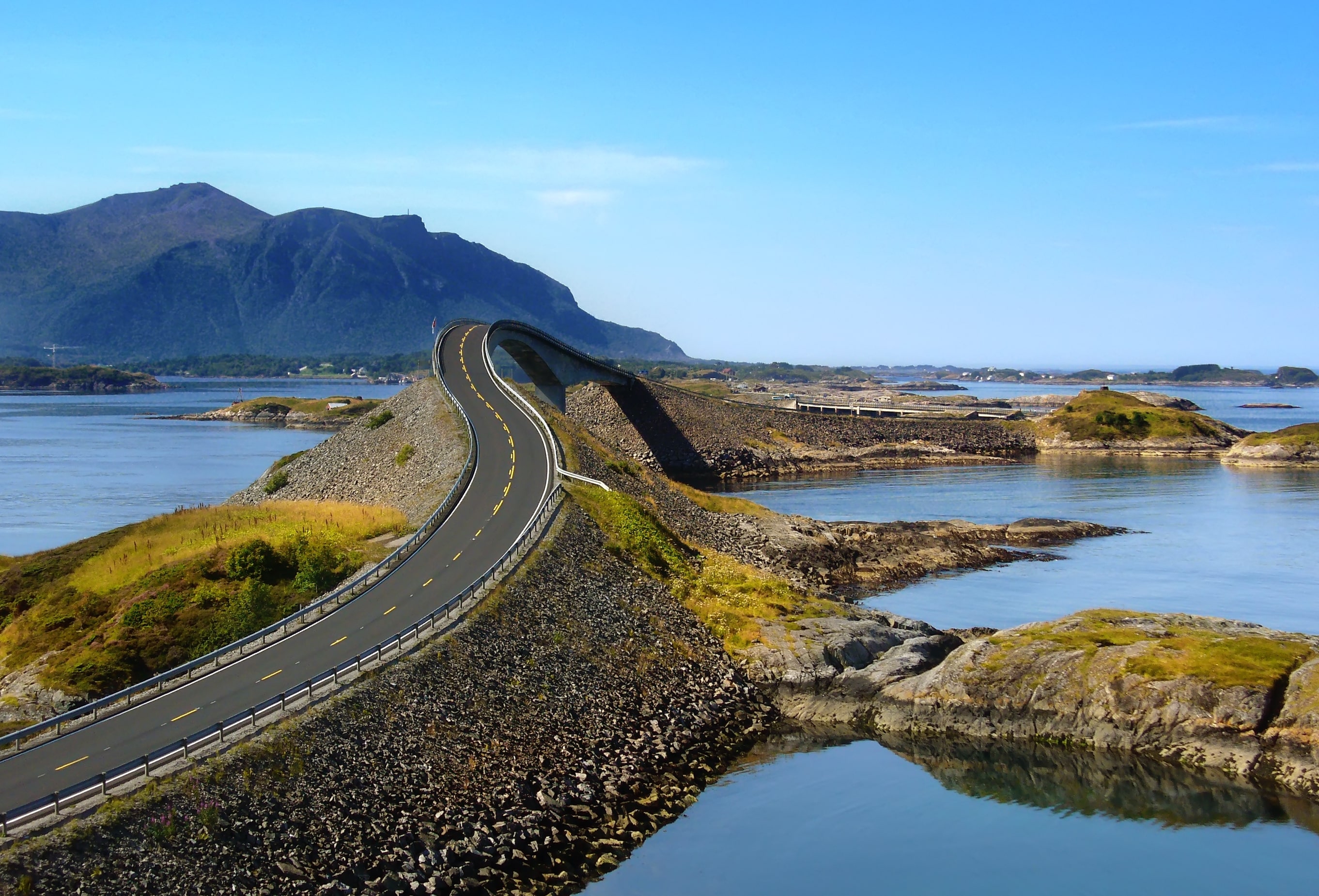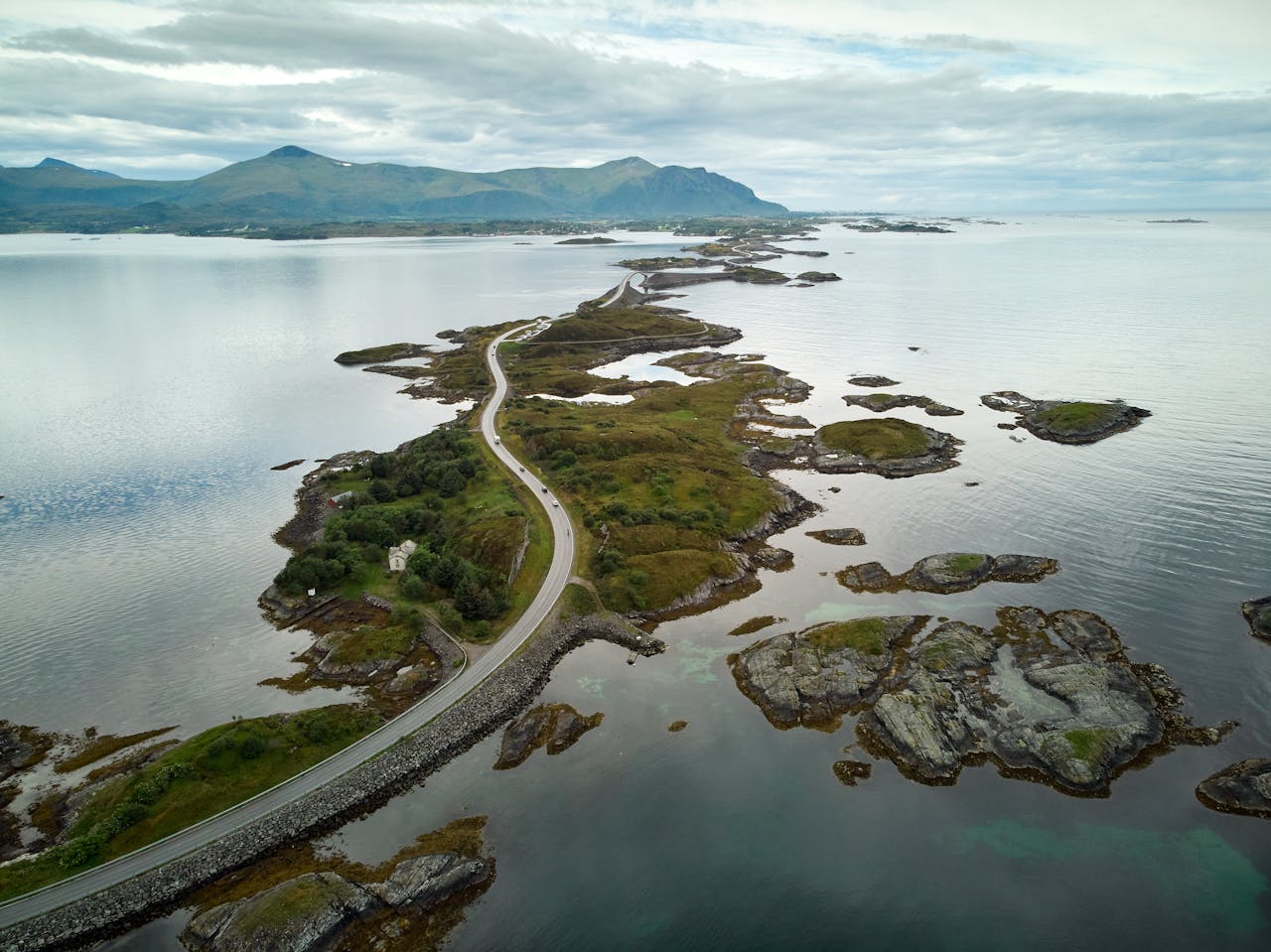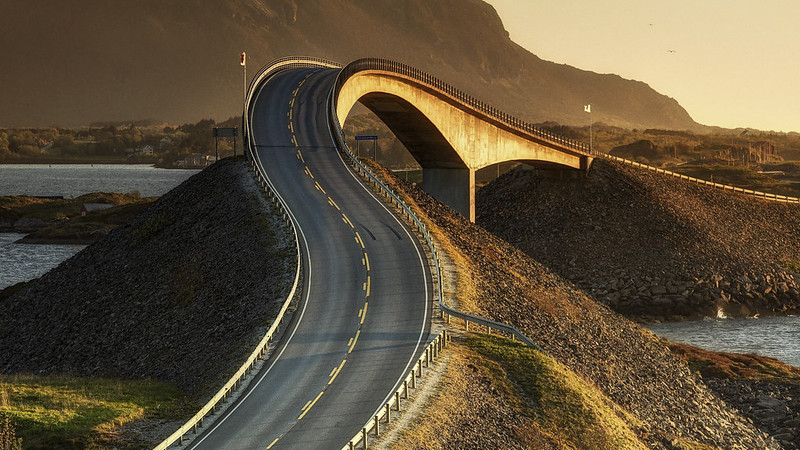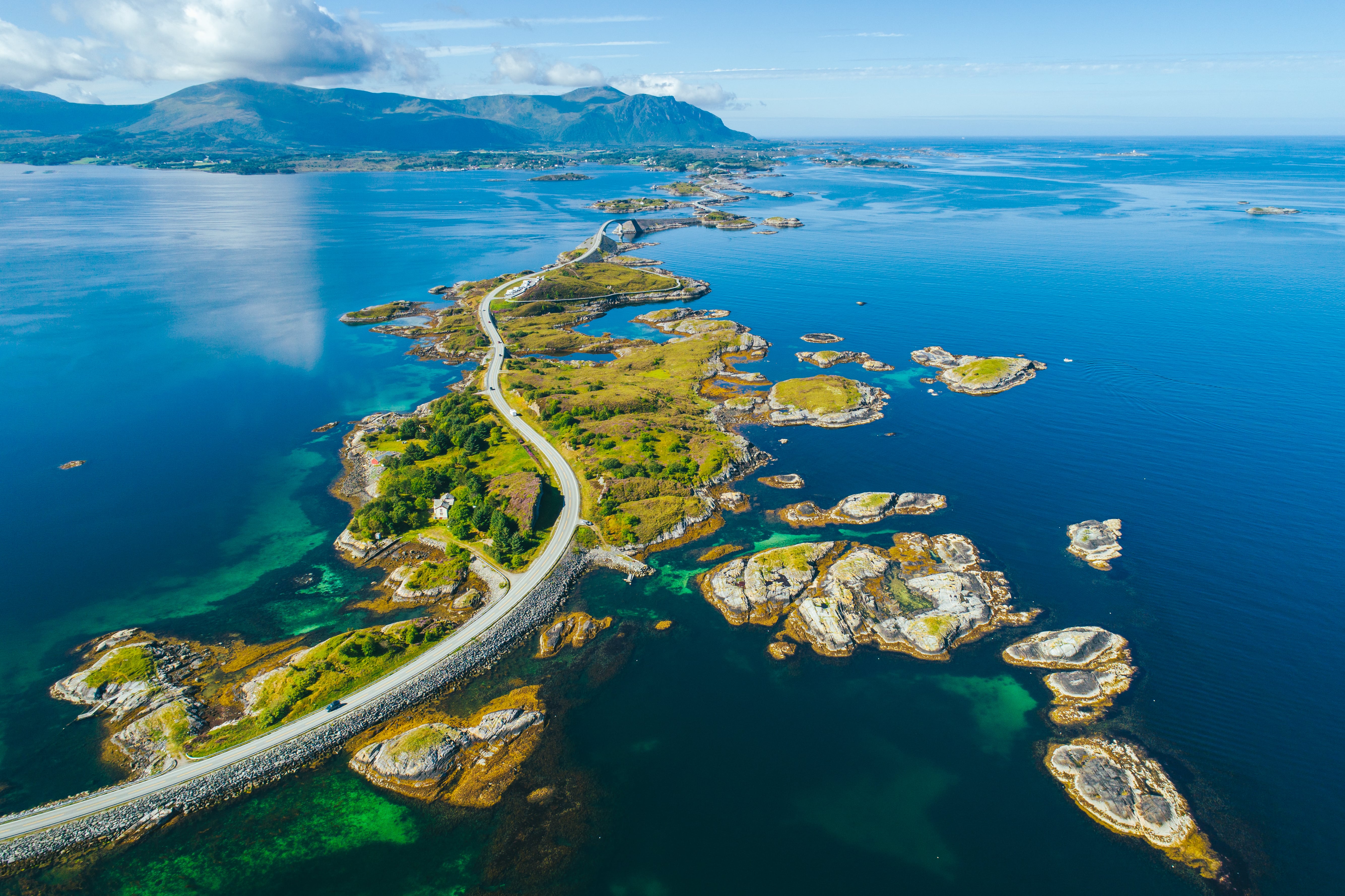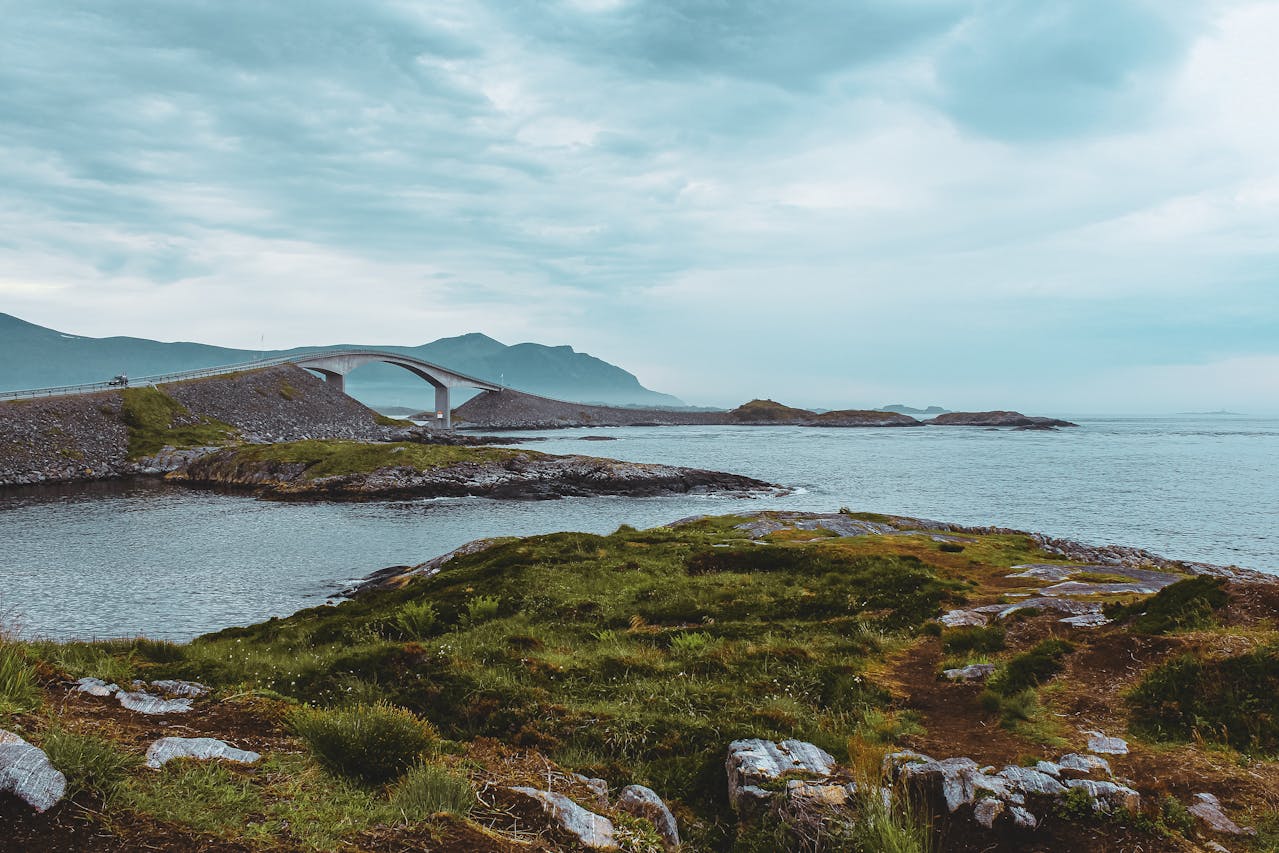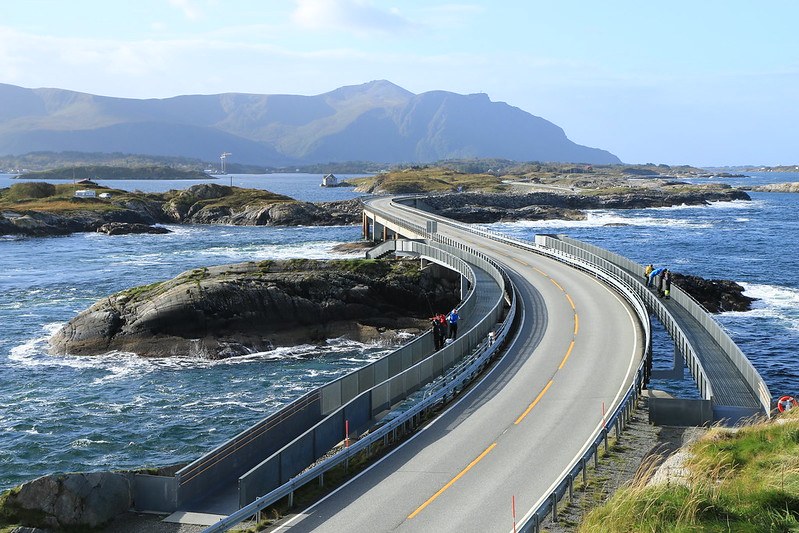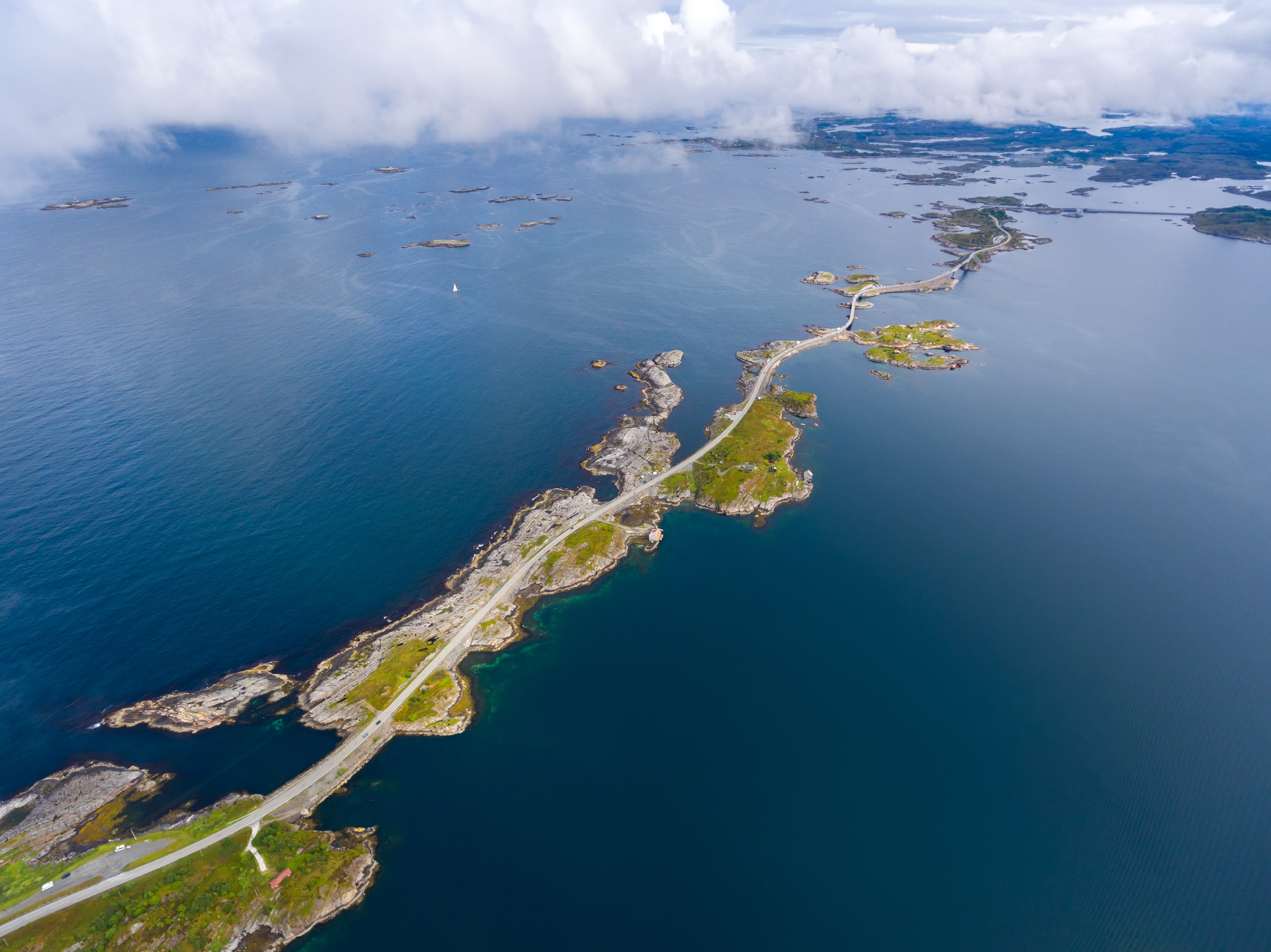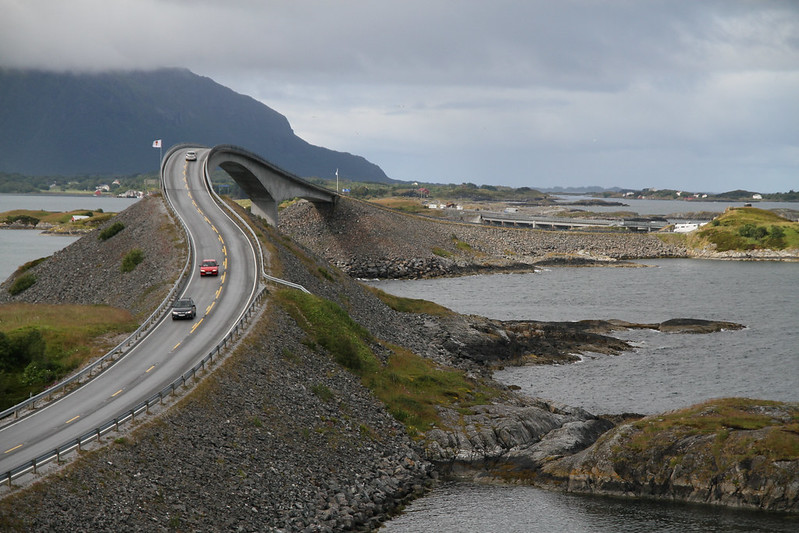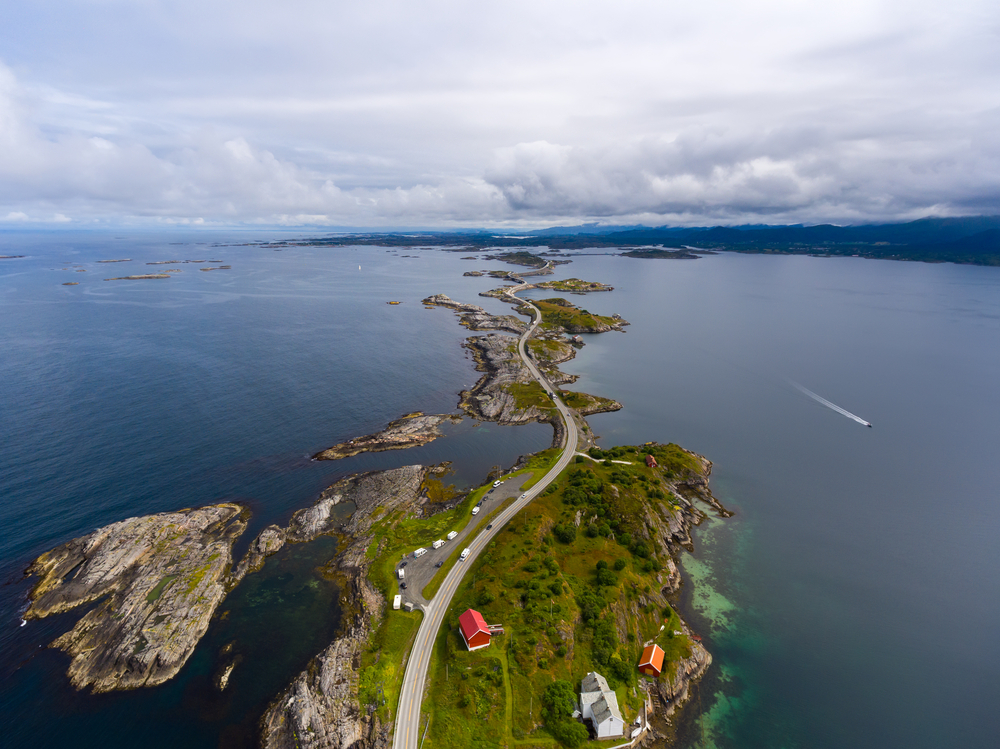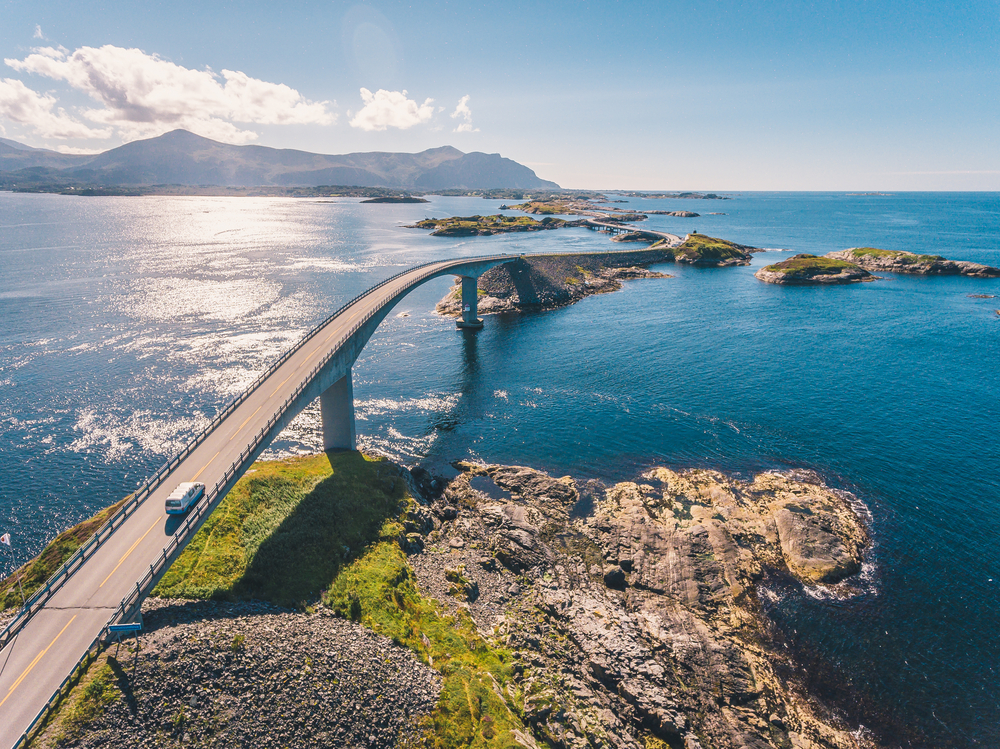Atlantic Road, Norway
The Atlantic Road—also known as the Norwegian Scenic Route—in Norway is a unique stretch of road that takes you right up to the ocean’s edge.
It is said to be one of the world’s most beautiful drives, and has an intense side of danger that also makes it one of the most dangerous roads in the world.

Location
The Atlantic Road connects Averøy with the mainland via a series of small islands and islets with a total of eight bridges over 5.2 miles.
The Design
The road has a roller-coaster feel with curvy bridges that dip and arch over and around the massive ocean waves.
Creation
The Atlantic Road was started in 1983 and first opened in 1989. Construction was a major challenge as the workers experienced 12 horrific hurricanes during the project.
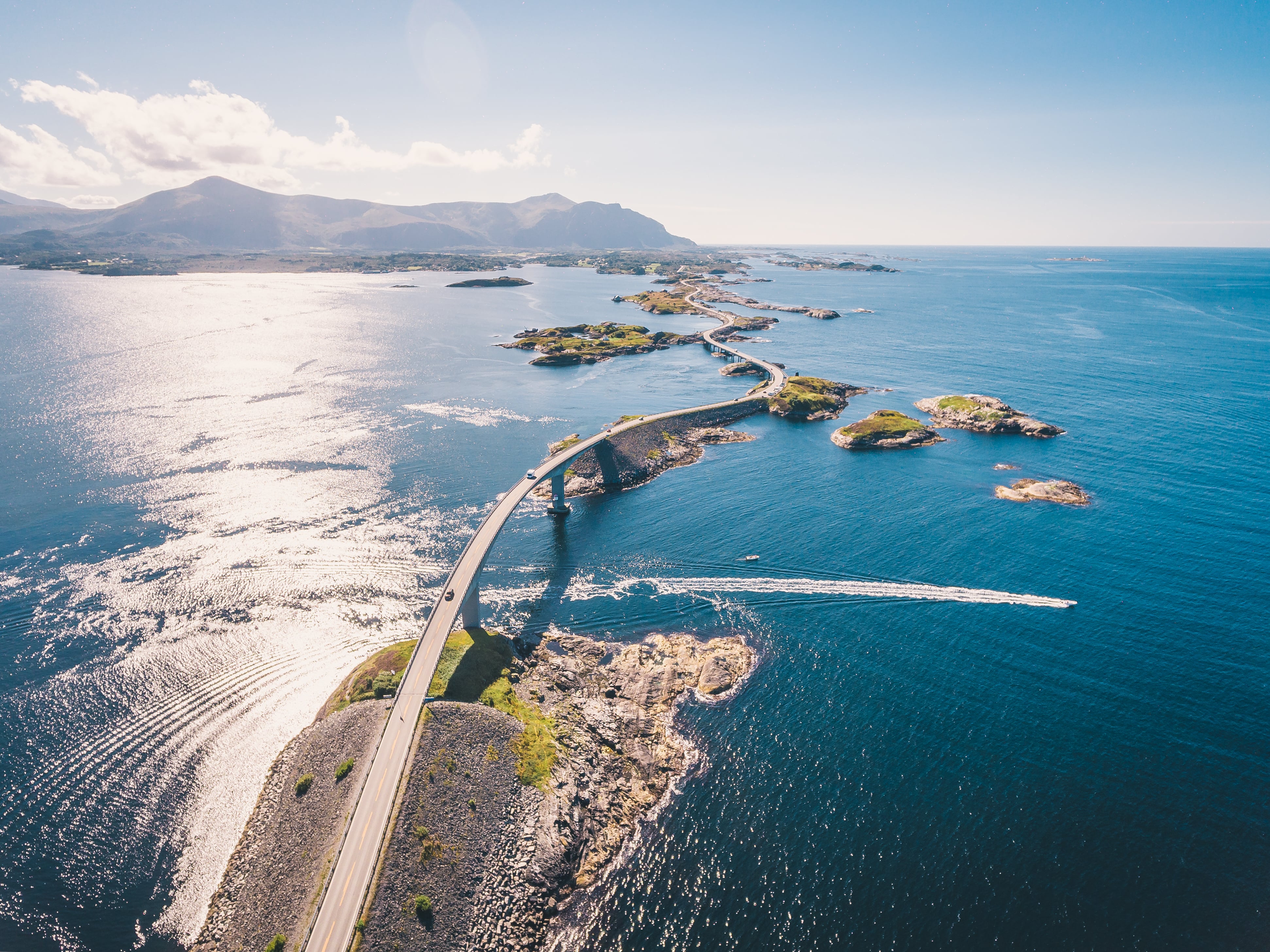 Dmitry Tkachenko Photo, Shutterstock
Dmitry Tkachenko Photo, Shutterstock
Purpose
The Atlantic Road was built to improve transportation between the islands and the Norwegian mainland. However, it instantly became a popular tourist attraction drawing in visitors from all over the globe.
Honorary Acknowledgments
In 2005, the Atlantic Road, Atlanterhavsvegen, was named as the building of the 20th century for its sheer size and creativity.
It is also considered an engineering marvel, considering its challenging construction process.
The Famous Atlantic Road Bridge
The Storseisundet Bridge is a drastically-curved bridge along the road, and it the longest of the eight bridges.
The Storseisundet Bridge
This bridge is often referred to as “the road to nowhere” due to the unique angle and design of the road appearing to drop off into the sea.
It is also the biggest tourist hot spot along the entire road.
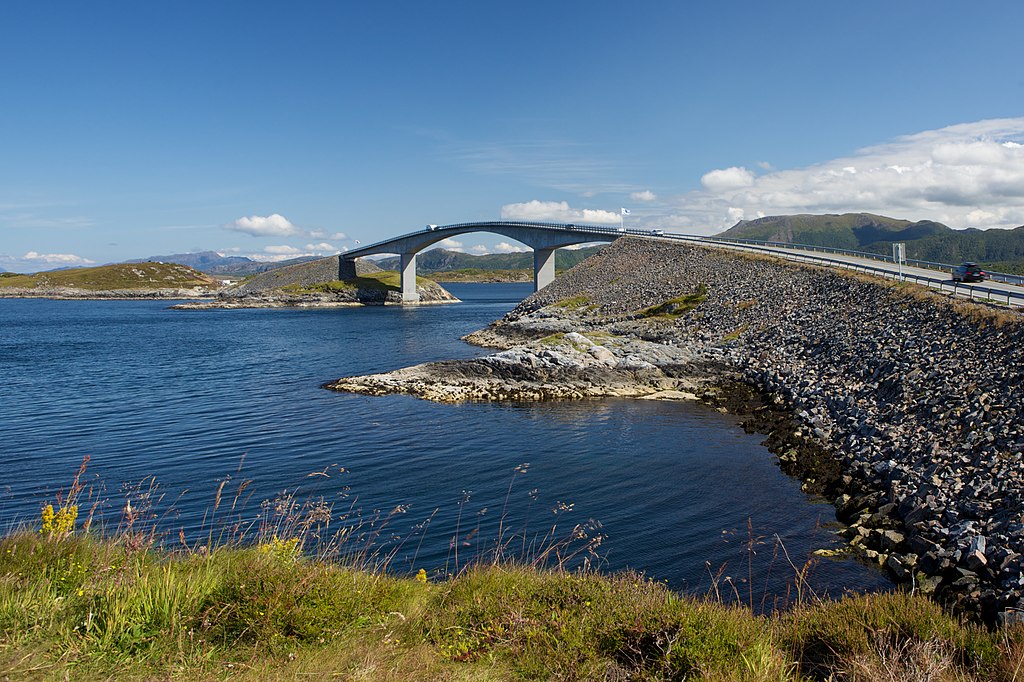 Ernst Vikne, CC BY-SA 2.0, Wikimedia Commons
Ernst Vikne, CC BY-SA 2.0, Wikimedia Commons
Length & Time to Travel
At 8.3 kilometers (5.2 miles) long, the Atlantic Road in Norway takes about 10-20 minutes to drive, depending on speed.
If you plan on stopping for views—which you should—it will take you much longer.
Cost to Travel
Travel along the Atlantic Road is free. Tolls were previously collected, however within ten years of its construction, the tolls paid off the road’s construction costs—making it now toll-free since 1999.
Places to Stay
There are no hotels or restaurants along the Atlantic Road, but there are many nearby towns and villages that offer beautiful coastal experiences.
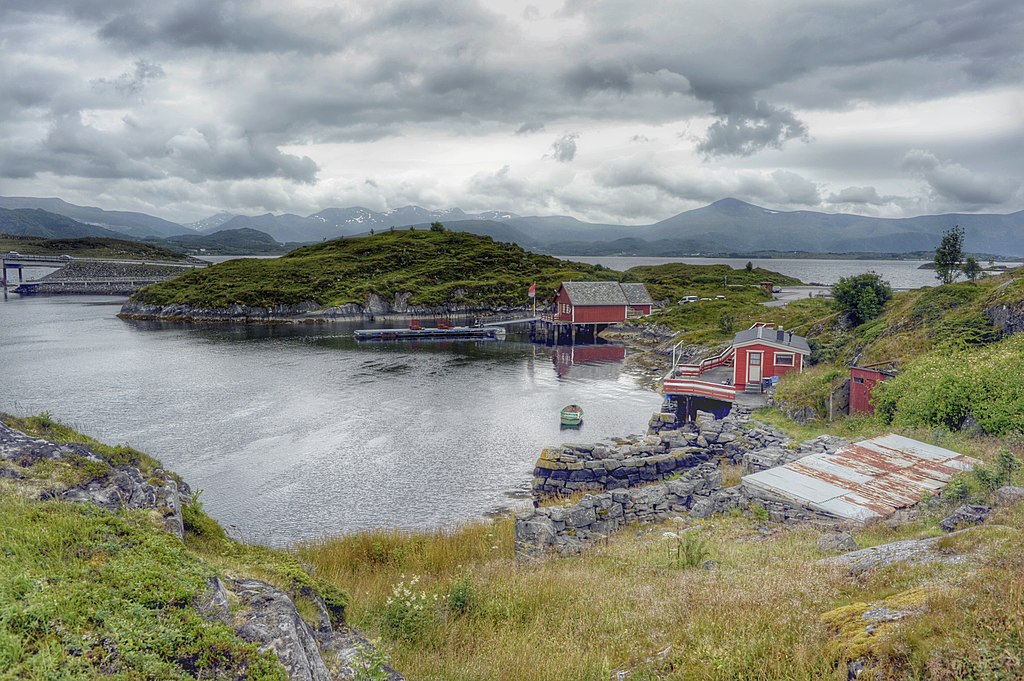 Tatiana Bashinskaya, CC BY 3.0, Wikimedia Commons
Tatiana Bashinskaya, CC BY 3.0, Wikimedia Commons
The Scenery
The scenic beauty is the top reason tourists make the drive. The Atlantic Road offers breathtaking views of the Norwegian coastline, the North Atlantic Ocean, and the surrounding fjords and mountains.
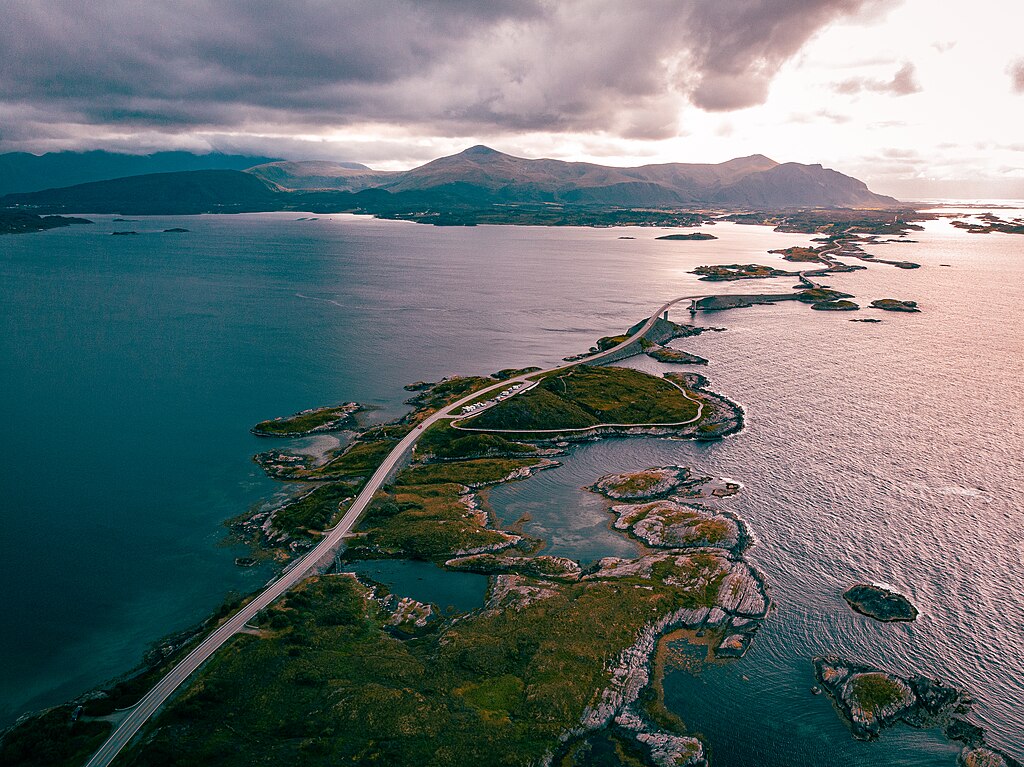 Clementp.fr, CC BY-SA 4.0, Wikimedia Commons
Clementp.fr, CC BY-SA 4.0, Wikimedia Commons
Fishing
There are several amazing fishing spots along the Atlantic Road. Popular with anglers, the entire road allows you to fish right on the edge of the sea, far from big stretches of land.
The Myrbærholmbrua bridge as a designated pedestrian walkway for fishing.
Bird Watching
Avid bird watchers visit the Atlantic Road to spot sea eagles, Atlantic puffins, gulls and a variety of other sea birds.
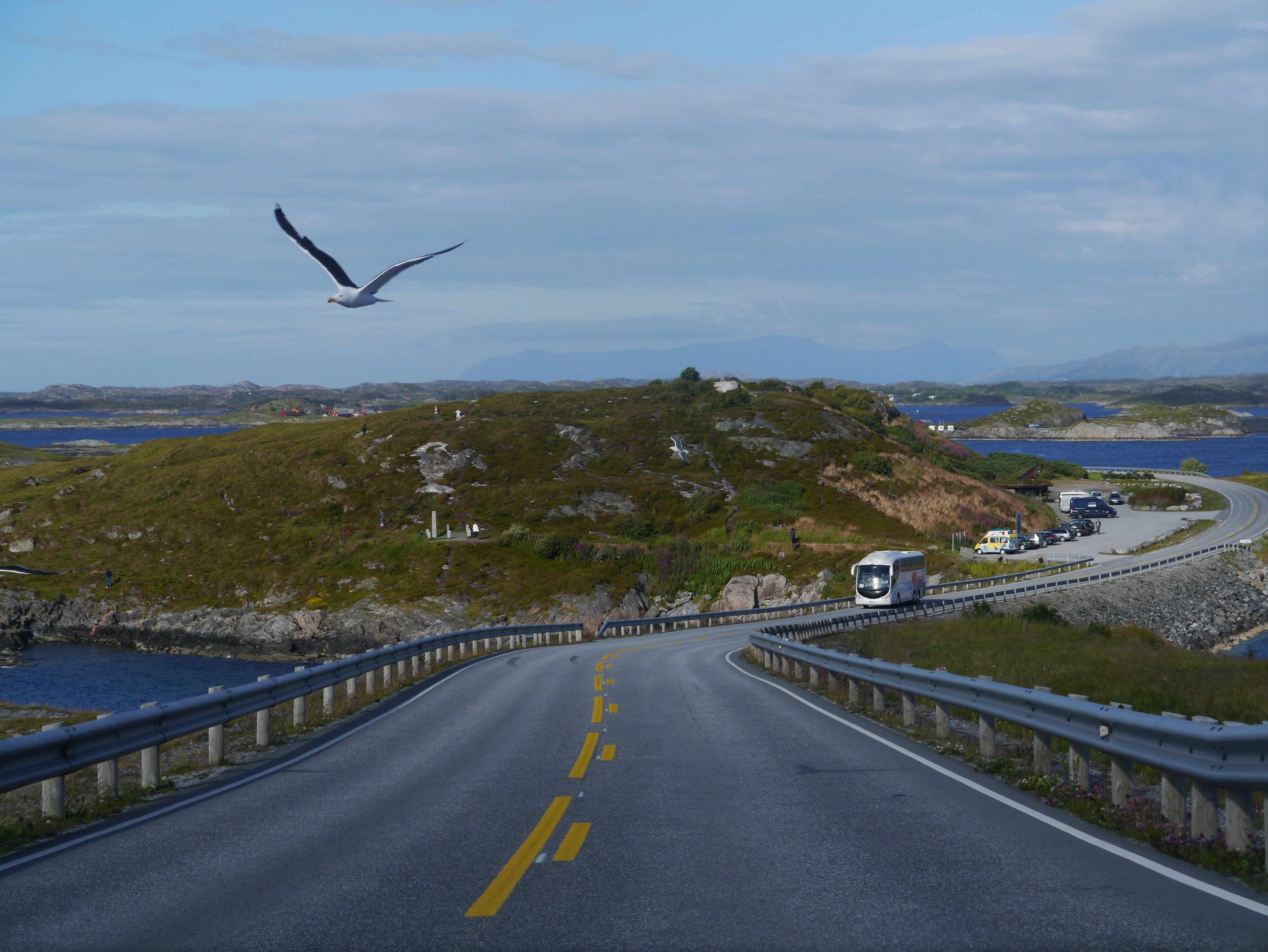 Zairon, CC BY-SA 3.0, Wikimedia Commons
Zairon, CC BY-SA 3.0, Wikimedia Commons
Cycling & Walking
Vehicles are not needed to experience the Atlantic Road. Many tourists take in the fresh ocean air while riding or walking the route.
Rest-Stops
There are several rest-stops and viewpoints along the Atlantic Road, with the biggest of these being on the island of Eldhusoya, which has a service building, café, bathroom facilities and a mobile home parking lot.
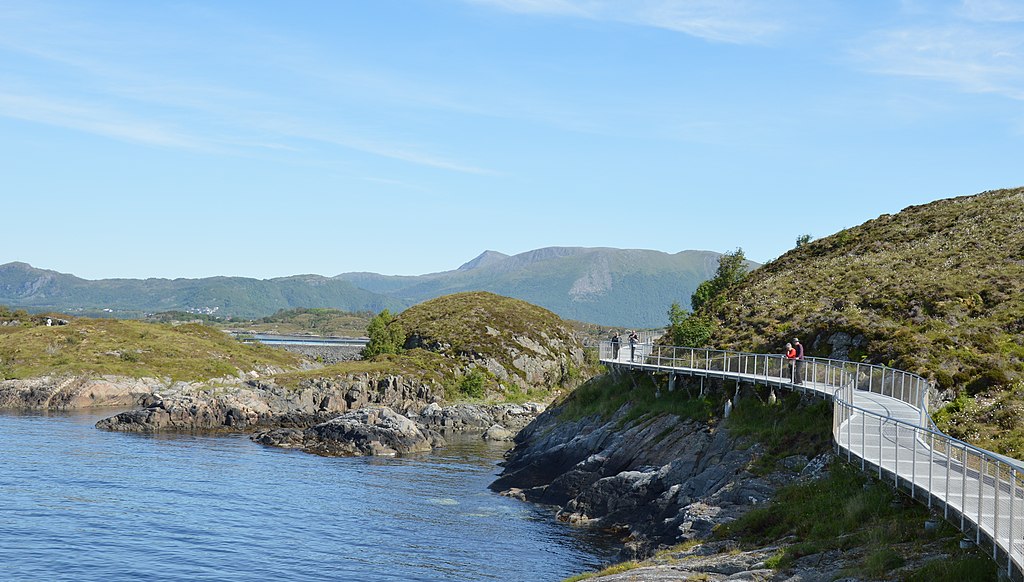 Olaf Meister, CC BY-SA 4.0, Wikimedia Commons
Olaf Meister, CC BY-SA 4.0, Wikimedia Commons
Weather Conditions
The Atlantic Road is particularly famous for its exposure to the elements, including storms and heavy waves.
During bad storms the road will be closed to traffic for safety reasons.
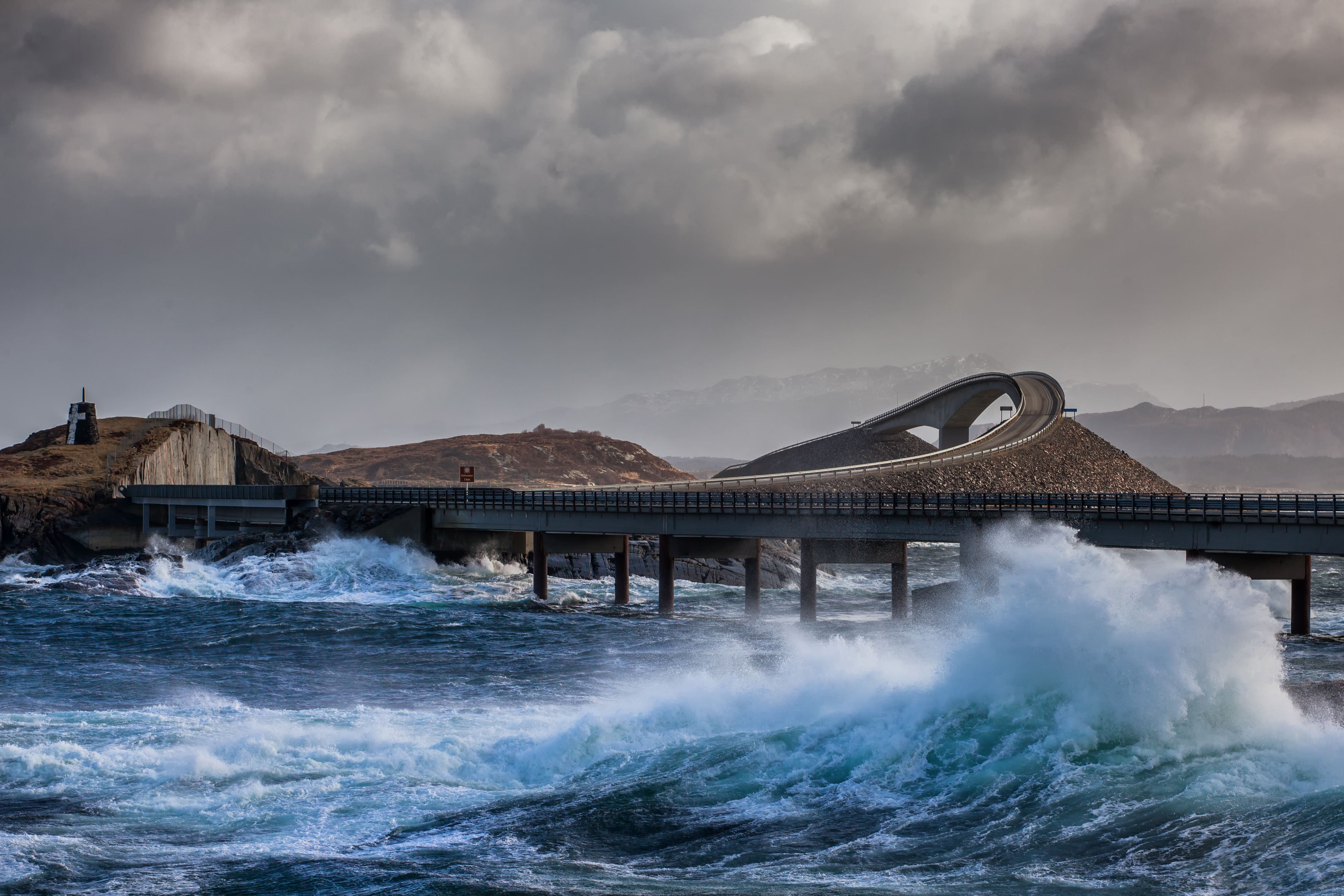 Benjamin Zocholl, Shutterstock
Benjamin Zocholl, Shutterstock
Opening Dates
The road is typically open all year round, aside from during extreme weather conditions. Conditions are said to be challenging in winter months.
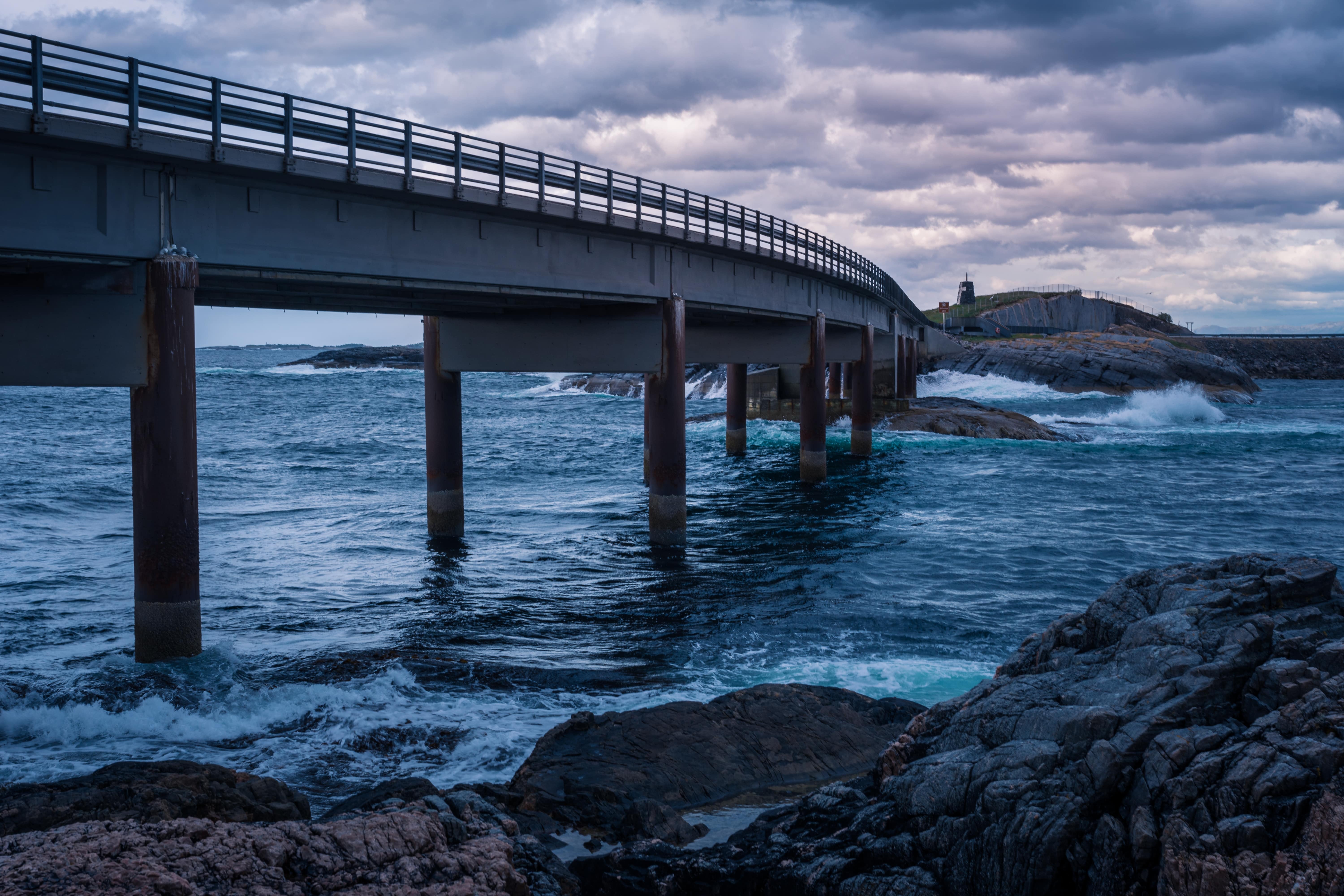 pavlanecasova.com, Shutterstock
pavlanecasova.com, Shutterstock
Traffic Reality
One of the downsides to the Atlantic Road is the traffic. Although these photographs give the illusion of a quiet and peaceful atmosphere, in reality this road is quite popular and often experiences heavy traffic.
Dangerous Conditions
Traveling this road in dangerous conditions is obviously advised against. However, unexpected weather can occur while you’re already on route, such as wind.
It is advised to stay in your car during heavy winds (and other bad weather conditions) to avoid any accidents involving people chasing their belongings over the edge.
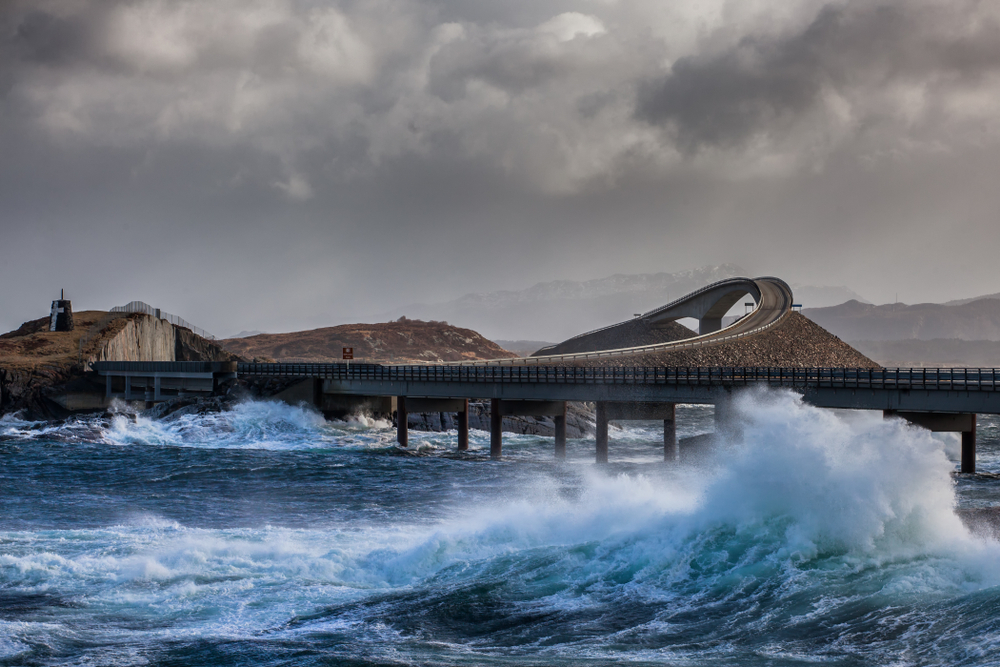 Benjamin Zocholl, Shutterstock
Benjamin Zocholl, Shutterstock
Vehicle Accidents
Considering the dramatic dips and curves of the Atlantic Road, there are very few accidents reported each year.
The road sees roughly 15-20 accidents, usually as a result of speed and distracted driving.
Tourism
As previously mentioned, the Atlantic Road is a top tourist attraction in Norway, bringing in around 250,000 visitors each year.
Tourism: Rest Stops
The scenic rest stops are the top choice for tourists, making it busier than you might expect. The hot spots for photography and fishing are often said to be “jam packed”, especially during good weather.
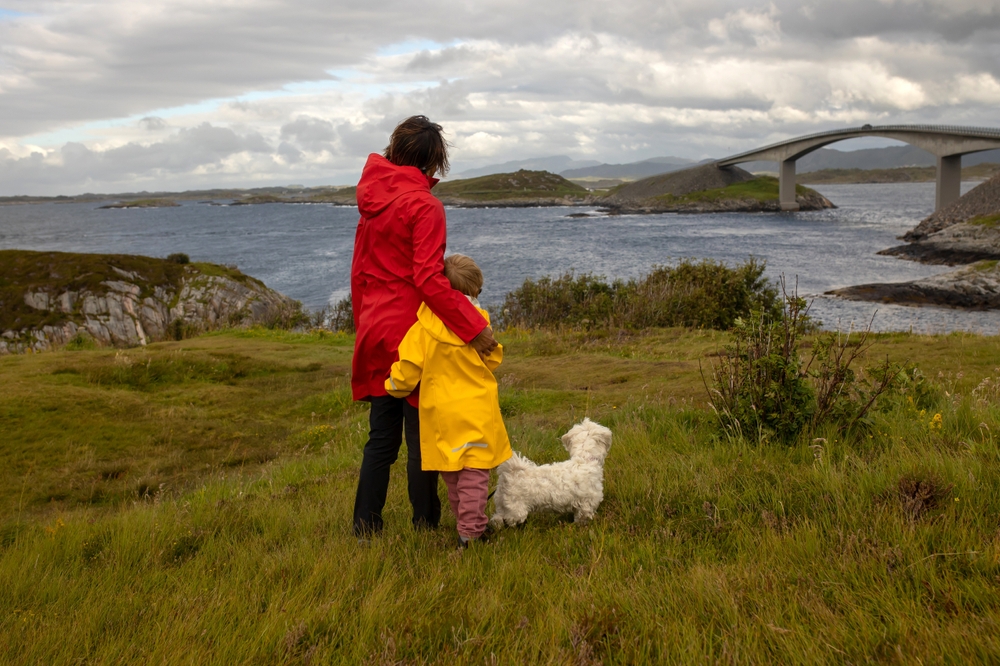 Tomsickova Tatyana, Shutterstock
Tomsickova Tatyana, Shutterstock
Tourist Fatality
There is only one reported tourist accident, involving a fatality. Apparently, an Israeli tourist fell into the water while standing next to its edge and was quickly carried off by the current.
 A. Aleksandravicius, Shutterstock
A. Aleksandravicius, Shutterstock
Norway Roads
For eight years in a row, Norway was listed as the European country with the lowest number of road traffic fatalities per million residents.
Even with this dangerous and scary road, Norway continues to top the charts in terms of safety.
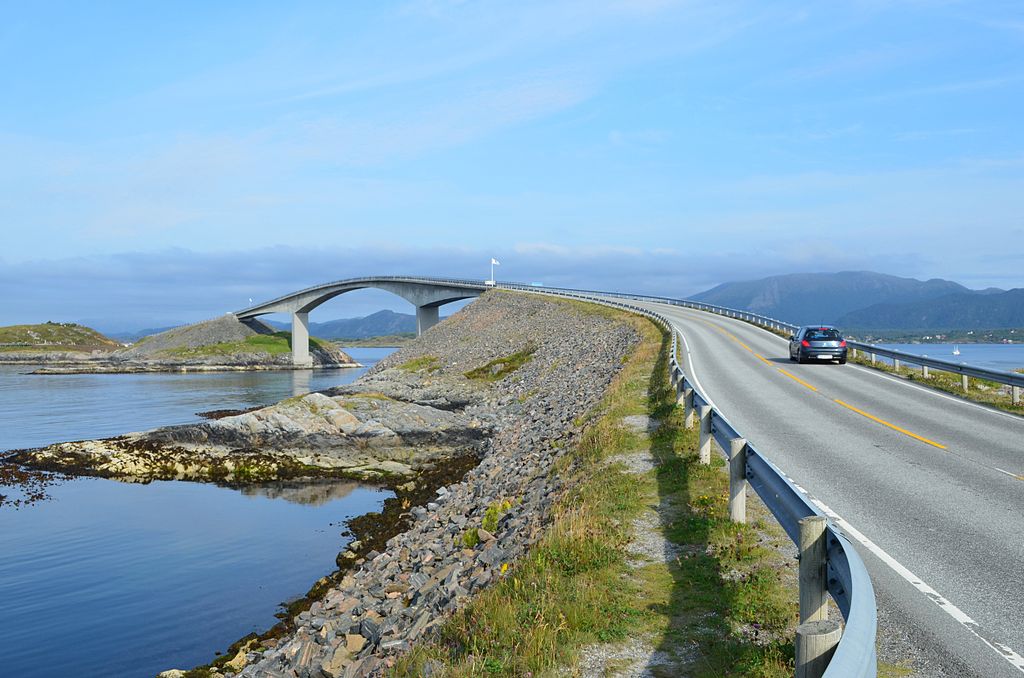 Nick from Bristol, UK, CC BY 2.0, Wikimedia Commons
Nick from Bristol, UK, CC BY 2.0, Wikimedia Commons
Final Thoughts
The Atlantic Road in Norway stands as both one of the most beautiful drives in the world, and one of the most dangerous drives in the world—and it fits both titles.
With stunning, edge-of-the-world views along terrifying, steep twists and turns over the treacherous ocean waters, the Atlantic Road is a popular tourist attraction drawing in visitors from all over the globe.


